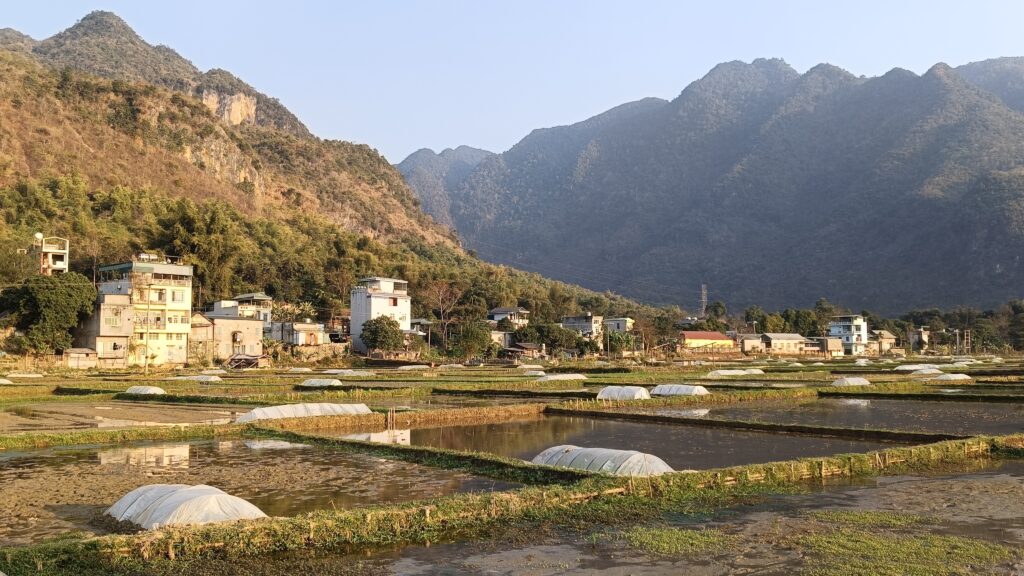Vietnam 2025

Back in 2010 when I first visited Vietnam, I swore that I would never go back again. I think many independent travellers had the same experience. Taxi meters were tampered with, English was not widely spoken even within the travel industry, crooks and scams await at every corner. What made me decide to go back in 2024? I saw travel photos posted by friends on Facebook. Even though most of them were not independent travellers, they seemed to have positive experiences. By then, there was Grab and I figured that the problem of cheating drivers might be alleviated. I made the trip to Hà Giang.
Did I like it? I certainly did, but I didn’t really venture beyond northern Vietnam. That’s why in 2025, I decided to make another trip just to check out certain places in the central and southern parts of Vietnam to see which places are worth further exploration. I first place that caught my eye was the not so frequented Mai Châu.
My love affair with the Land of Smiles began when I was only 19. I was sent to Thailand for military training and I fell in love with the friendly, incredibly hospitable and gentle people. Around the countryside of Kanchanaburi Province, the boy in me found the laid back, forgiving and easygoing style that I could only dream of in a rigidly planned and highly disciplined Singapore. After countless visits, I spoke Thai, made many Thai friends and planned to settle down but fate had other plans …
Mai Châu is inhabited by same ethnic group that forms the majority in Thailand. Though the people spoke a different dialect, it was possible to communicate with simple common Thai words. Just like in Laos, everyone thought I’m Thai. The main attraction of Mai Châu was the flooded fields with vast open spaces and mountains in the background. Like the picturesque Thai countryside, the environment is most conducive to daydreaming.
I returned to Hanoi after a short layover in Hanoi, had a fortuitous meeting with an acquaintance at the hotel where I stayed before and after one night, I was on my way to Huế. The old citadel here is perhaps the most visited site in Huế. Like Mai Chau, it didn’t disappoint. Those most of the structures in the imperial capital were in utter disrepair even before the war, the results of the restoration works were simply amazing. A visit to Minh Mang’s tomb and stroll along the Perfume River in the evening made this an inspiring and memorable trip. I missed out a few sites and will probably go back.
From Huế, I travelled further south to the beach town of Lăng Cô. It’s on a thin strip of land between the roaring East Vietnam Sea to the east and a placid lagoon on the west. Some book I got from the library said that Lăng Cô but to be honest, I find it a little disappointing The beaches, both on the west and the east were too dirty even though the villa where I stayed was quite pleasant and comfortable. The food was also excellent. Overall, Lăng Cô has been a slight letdown. I don’t think I will visit again.
The Chinese presence in and around the town of Hội An. Cao Dai is a Vietnamese religion founded in 1926 that combines elements of various faiths, including Buddhism, Christianity, Taoism, and Confucianism. It’s known for its syncretic nature, aiming to create a universally acceptable religion and promote harmonious human relationships. This Cao Dai temple is found near the old town of Hội An. The devotees were surprisingly friendly and welcoming.
I decided to go direct to Hội An from Lăng Cô, bypassing Danang. Hội An is a remarkably charming old town that might remind one of Venice because of the many canals that run alongside the alleys. It looks a bit like Boat Quay in the old days. If not for the crowds, it would have been quiet, inspiring and romantic. While it’s pretty commercialised, the town preserves its own character with minimal reconstruction. It’s a pity that there are way too many tourists here. I’m unlikely to return.
My final destination before Ho Chi Minh City, Danang. From my research, this place looks like a Vietnamese version of Singapore. It’s very modern and apart from the Marble Mountains and the Ba Na Hills, there’s really nothing special for me over here. Expecting Ba Na Hill to resemble a very crowded Genting, I decided not to go there. As it turned out, the Marble Mountains were also crowded and I found the whole setup a bit prosaic and contrived, so I’m unlikely to return. Travelling in Vietnam during Tết is a challenge. Some shops are closed, drivers are on leave and places are crowded. Perhaps the only plus point is that the cities and their inhabitants are dressed their best.
Then, there’s Mỹ Sơn, Vietnam’s answer to Angkor Wat. The Champa Kingdom was a Hindu dynasty that ruled over central and southern Vietnam, including parts of present day Cambodia from 200 AD to 1832 when it was conquered by the Nyguen dynasty. Champa existed alongside the Khmer kingdom and was influenced by the latter’s culture, occasionally even coming under Khmer rule. From the north, Champa faced pressure from the Vietnamese, but managed to resist them for centuries. Culturally, Champa was strongly influenced by India. Hinduism and Buddhism shaped its art, architecture, and religious practices. Today, vestiges of this once great kingdom can be found in My Son.
On this trip, I covered several cities from north to south I got a pretty good overview of what to see and where to stay on future trips. Where will I go on my next trip to Vietnam? I’ll let you know.
 Check Out Knapsack Books by Chan Joon Yee
Check Out Knapsack Books by Chan Joon Yee